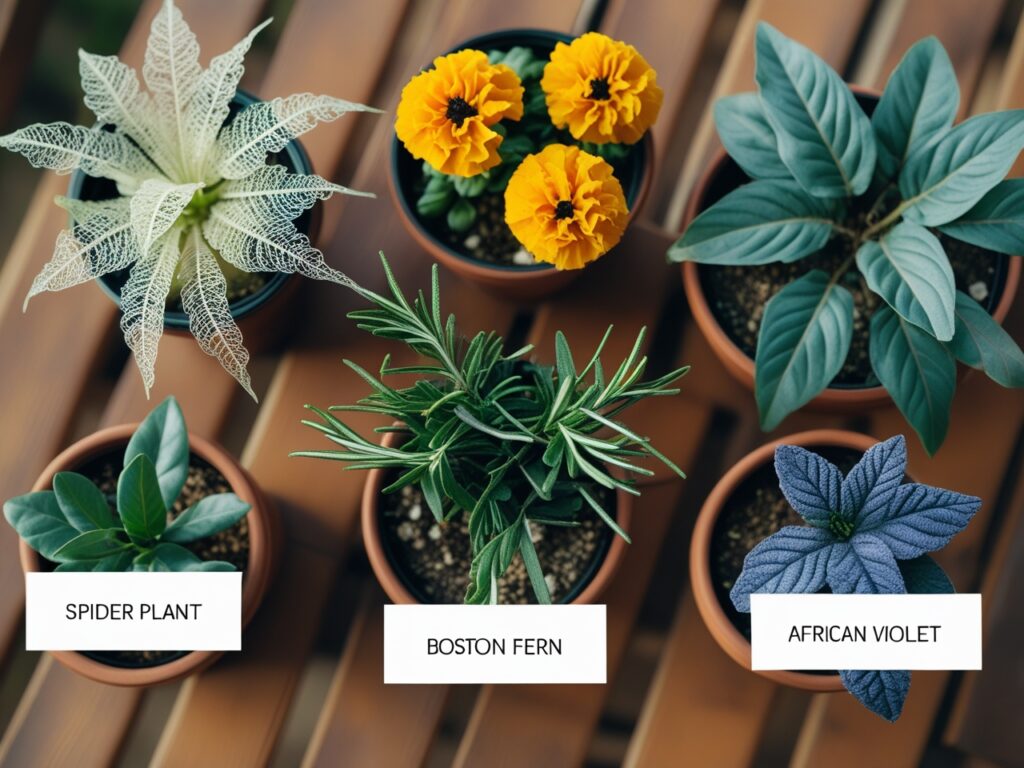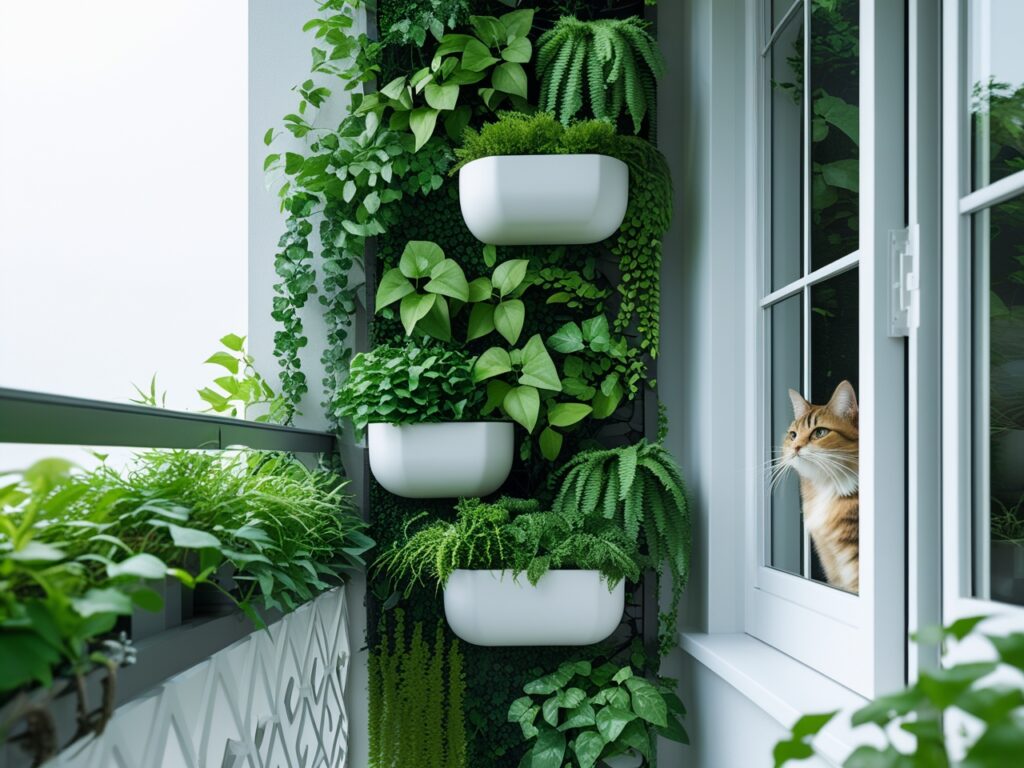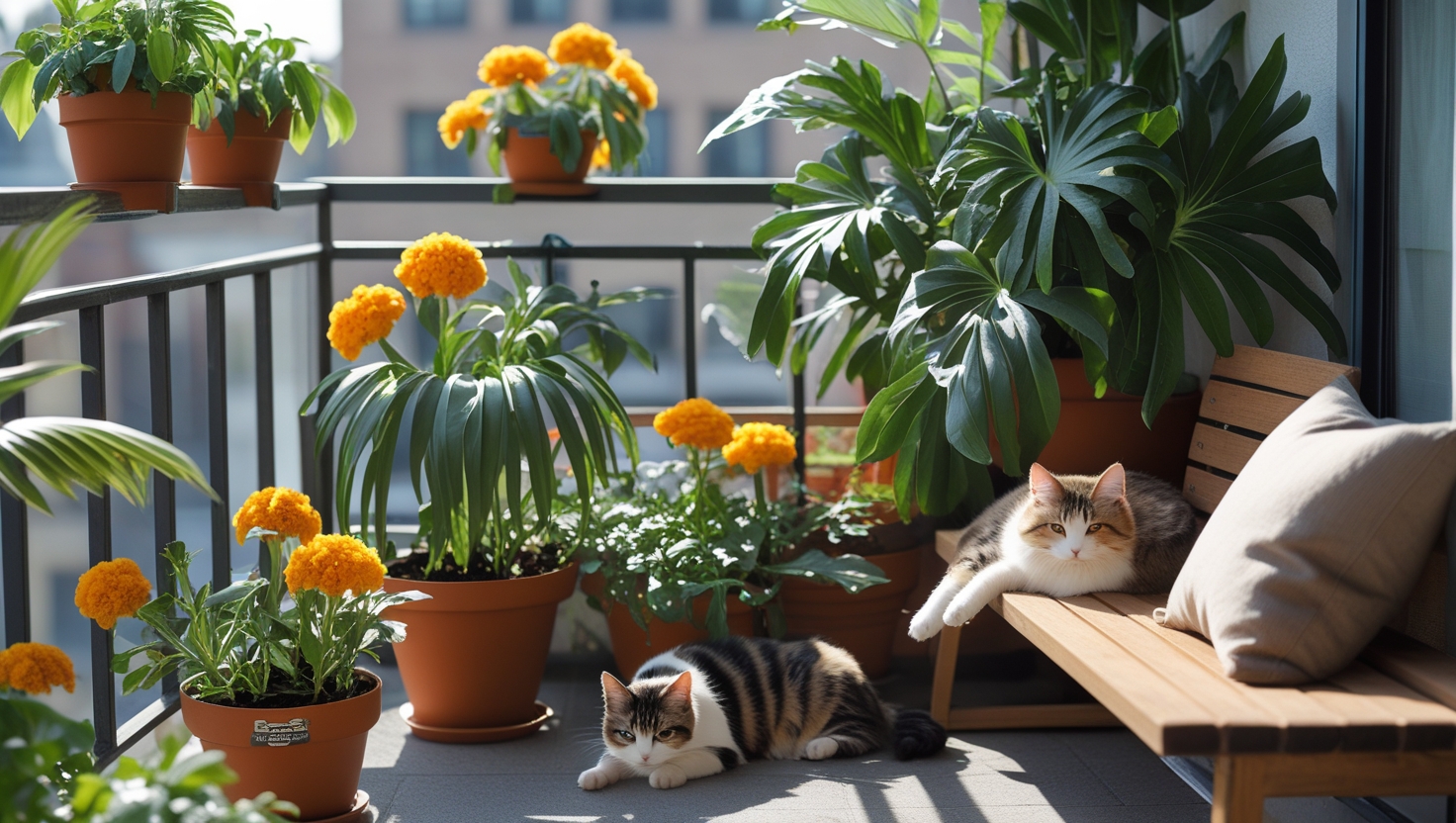Creating a green balcony shouldn’t mean compromising your pet’s safety. Many common plants are toxic to cats and dogs, making plant selection a critical step for pet owners. This guide explores the best pet safe balcony plants, how to design for style and safety, and how to avoid dangerous choices—so you can build a lush, pet-friendly oasis.
Why Pet Safe Balcony Plants Matter
Balcony gardens are havens of fresh air, color, and calm. But for pet parents, they can also pose hidden hazards. Many popular houseplants contain toxic compounds that can cause anything from mild tummy upset to serious illness in pets. This is especially risky for apartment dwellers, where balconies are shared spaces for pets and plants alike.
Fortunately, there’s a wide selection of gorgeous, pet safe balcony plants. By choosing non-toxic greenery and arranging your layout thoughtfully, you can keep your space both stylish and safe. In this guide, you’ll discover vet-approved plants, design ideas, safety tips, and real-life success stories to help you build the perfect garden—without the worry.
Quick Reference: Top 10 Pet Safe Balcony Plants
Here’s a fast, expert-backed list of the top plants that are beautiful, easy to grow, and 100% pet safe:
- Spider Plant – Air-purifying, tolerant of partial shade.
- Boston Fern – Soft, elegant fronds that enjoy humidity.
- Marigold – Bright blooms and natural pest repellent.
- Rosemary – Aromatic herb that doubles as insect control.
- Zinnia – Long-lasting, colorful flowers that attract pollinators.
- Calathea – Striking leaf patterns and safe for curious pets.
- Prayer Plant (Maranta) – Gorgeous movement and color.
- Parlor Palm – Great for shade and adds tropical texture.
- Money Tree (Pachira aquatica) – Pet-safe and symbolizes good fortune.
- African Violet – Compact, colorful, and non-toxic.

Little-known fact: Some of these plants—like marigolds and rosemary—not only beautify your balcony but also help keep pests at bay with their natural scents.
What Makes a Plant Pet Safe?
Plant toxicity is largely due to chemical compounds like saponins, oxalates, and glycosides, which can be harmful to pets when ingested. Common symptoms include drooling, vomiting, diarrhea, and in severe cases, neurological or cardiac issues.
The ASPCA maintains a trusted list of toxic and non-toxic plants. Always verify a plant’s safety using multiple sources, especially when adding something new to your balcony.
Little-known fact: The sago palm, despite being marketed as a “mini palm,” is highly toxic—even small amounts can cause liver failure in dogs or cats.
The Hidden Dangers: Popular Balcony Plants to Avoid
It’s easy to be drawn to pretty plants at the nursery, but many are unsafe for pets. Here are common toxic balcony plants to avoid:
- Lilies – Especially dangerous to cats; even small exposures can cause kidney failure.
- Sago Palm – All parts are toxic; seeds are the most deadly.
- Oleander – Contains cardiac glycosides, highly toxic to both dogs and cats.
- Azaleas – Ingesting a few leaves can trigger serious reactions.
- Aloe Vera – Healing for humans, harmful to pets.
In fact, according to ASPCA data, thousands of pet poisoning cases each year are linked to plants. Even “safe” plants can cause minor issues like vomiting if overeaten, so moderation matters—even with non-toxic options.
Case Studies: Real Pet Owners’ Success Stories
Rachel from NYC created a vertical garden using only pet-safe plants after her cat had a close call with lilies. She now uses prayer plants and marigolds in hanging baskets, keeping the floor clear for her curious tabby.
Luis and Mei in Chicago built a mini dog-friendly herb garden with rosemary, basil, and lemon balm. Their small dog loves sniffing the planters, and they use the herbs in their cooking.
A Reddit user shared their experience converting a narrow balcony into a lush but pet-safe jungle. By using large planters with parlor palms and placing zinnias on wall-mounted brackets, their cat stays intrigued—but safe.
Little-known fact: Larger safe plants like money trees and palms can act as visual and physical barriers, reducing the chance pets reach more delicate pots or climb railings.
Detailed Profiles: Stylish Pet Safe Balcony Plants
Let’s explore 10 standout options for pet-safe balconies in more detail:
1. Spider Plant (Chlorophytum comosum)
- Light: Indirect to bright
- Care: Easy, tolerates neglect
- Benefit: Air-purifier; safe even if nibbled
- Tip: Produces baby “pups” that you can repot.
2. Boston Fern (Nephrolepis exaltata)
- Light: Indirect; loves humidity
- Care: Keep soil moist
- Benefit: Adds softness and cools air
- Tip: Great for hanging baskets or shaded corners.
3. Marigold (Tagetes spp.)
- Light: Full sun
- Care: Low maintenance
- Benefit: Pest-repellent blooms
- Tip: Deadhead regularly to encourage more flowers.
4. Rosemary (Salvia rosmarinus)
- Light: Full sun
- Care: Drought-tolerant once established
- Benefit: Culinary and insect-repelling
- Tip: Trim often to keep compact in containers.
5. Zinnia (Zinnia elegans)
- Light: Full sun
- Care: Easy to grow from seed
- Benefit: Colorful blooms; attracts bees
- Tip: Best in large pots with good drainage.
6. Calathea (Calathea spp.)
- Light: Low to medium light
- Care: Keep soil moist but not soggy
- Benefit: Stunning foliage; pet safe
- Tip: Avoid hard water—it can spot the leaves.
7. Prayer Plant (Maranta leuconeura)
- Light: Indirect light
- Care: Prefers humidity and consistent moisture
- Benefit: Folds leaves at night—fascinating to watch
- Tip: Keep away from direct sun to prevent fading.
8. Parlor Palm (Chamaedorea elegans)
- Light: Shade tolerant
- Care: Low maintenance
- Benefit: Adds tropical feel; grows tall but slender
- Tip: Ideal for shady balconies or indoor-outdoor use.
9. Money Tree (Pachira aquatica)
- Light: Indirect light
- Care: Water when topsoil is dry
- Benefit: Symbol of luck; safe and sturdy
- Tip: Braided versions add style to tight spaces.
10. African Violet (Saintpaulia spp.)
- Light: Bright, indirect
- Care: Keep leaves dry during watering
- Benefit: Compact with bold color
- Tip: Self-watering pots help maintain moisture levels.
Little-known fact: African violets thrive in humidity, making them ideal companions for city balconies with limited air circulation.
Balcony Design Tips: Arranging for Safety and Style
Design matters—not just for aesthetics, but for keeping your pets safe.
Use raised planters or hanging baskets to keep plants above nose level. Wall-mounted shelves or vertical gardens save floor space and prevent digging. For climbers or trailing plants, try macrame hangers or metal hooks attached to balcony railings.
Combine plants with different textures and heights—like bushy ferns next to spiky rosemary—to create visual interest without overwhelming the space.

Little-known fact: Some safe plants like lemon balm or lavender emit calming scents, which can reduce pet anxiety in high-traffic outdoor spaces.
Maintenance & Care: Keeping Your Balcony Green and Pet-Proof
A healthy balcony garden is all about consistency. Watering schedules matter—especially in hot weather. Use self-watering planters or drip trays to prevent puddles, which can attract insects.
Avoid chemical fertilizers and pesticides. Opt for organic compost, neem oil, or insecticidal soap labeled safe for pets.
Keep leaves trimmed to reduce temptation for pets to chew. Herbs like rosemary and basil are excellent dual-purpose plants—they smell great, repel pests, and add flavor to your meals.
Little-known fact: Many pet-safe herbs are naturally insect-repelling, so they serve double-duty without the need for harmful sprays.
Beyond the Basics: Rare and Underused Pet Safe Balcony Plants
Looking for something less common? Try these stylish yet safe alternatives:
- Fuchsias – Delicate hanging blooms that brighten shady balconies.
- Orchids (Phalaenopsis) – Exotic, elegant, and non-toxic to pets.
- Blueberry Bushes – Edible and safe; perfect for container growing.
- Pineapple Sage – Fragrant, hummingbird-friendly, and calming.
- Coral Bells (Heuchera) – Gorgeous foliage and hardy in varied conditions.
Little-known fact: Blueberry bushes aren’t just safe—they produce antioxidant-rich treats that both you and your pet can enjoy.
Market Trends: The Rise of Pet Safe Balcony Gardening
Interest in pet-friendly gardening is surging. According to major garden retailers, sales of labeled “pet-safe plants” have doubled since 2022. Online searches for “pet safe balcony plants” have risen steadily across gardening platforms.
Plant nurseries and e-commerce sites now feature “pet-safe” filters, helping buyers make informed choices. Urban gardeners are increasingly prioritizing safety over novelty—and the market is responding.
Little-known fact: Some cities now require balcony garden compliance with local pet safety codes in high-rise buildings—especially those with no indoor outdoor access for pets.
Frequently Asked Questions
No. Even non-toxic plants can cause mild digestive upset if over-consumed. Monitor your pet’s behavior.
Observe closely for symptoms like vomiting or lethargy. If concerned, consult your vet and bring a sample of the plant.
Check trusted resources like the ASPCA or consult your veterinarian. Look for “non-toxic to cats/dogs” labels in nurseries.
Yes—plants like money trees, parlor palms, and some types of orchids are safe, sturdy, and great for decorating.
Little-known fact: Some pets chew out of boredom, not hunger. Enrichment toys or designated sniffing plants (like lemon balm) can reduce unwanted plant chewing.
Real Customer Reviews & Testimonials
“My Boston fern survived the winter and my dog’s curiosity.”
—Michelle, verified buyer on The Sill
“I swapped my peace lily for a spider plant—safer for the cat, and honestly prettier.”
—u/greengal22 on Reddit
“Calathea was the star of my pet-safe balcony—no bites, just compliments.”
—YouTube commenter, “Urban Jungle with Pets”
Customers rave about both the aesthetic and the peace of mind these plants bring. Many say they finally enjoy their balcony without worry or pet-proofing stress.
Action Plan: Building Your Own Pet Safe Balcony Garden
Here’s how to start your own pet-safe garden today:
- Assess your balcony’s light and airflow.
- Choose 3–5 beginner-friendly, non-toxic plants.
- Use elevated planters or wall mounts to protect plants and pets.
- Water regularly and avoid chemical treatments.
- Watch your pet’s behavior and adjust the layout if needed.
Share your success—whether it’s a calming herb corner or a colorful vertical garden, your story could inspire others.
A Stylish, Safe Haven for Pets and Plants
With the right planning and plant picks, your balcony can be a place where pets and plants thrive together. You don’t have to sacrifice style or safety—just choose wisely and arrange thoughtfully.
Have questions or want to share your setup? Drop a comment or tag us with your pet-safe balcony garden!
